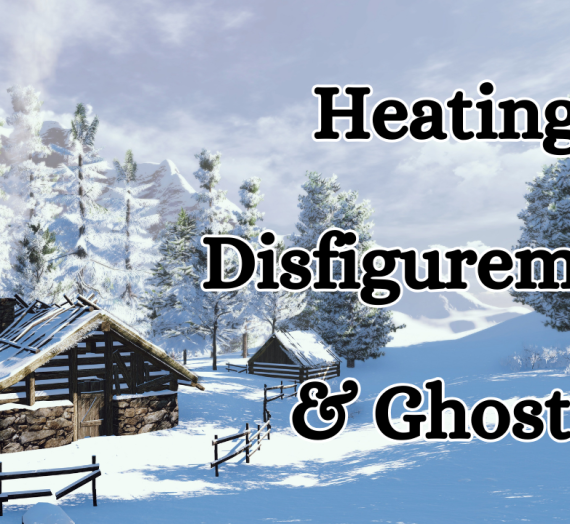There are many ways for your characters to light their homes, business, tent, or wherever they are at, without electricity. Today we will cover 5 of them.
1) Candles
Candles are a great source of light. They can burn between a few minutes to a several hours. They can be made of many types of wax and fats. They all have a wick. The wick is the part of the candle that burns. It should be made of undyed cotton. Synthetic materials, can not only burn quickly, but put off toxic fumes.
Candles have been around since roughly 3,000 BC. They have been used all though history, and are still used today. I imagine they would still be used in post apocalyptic situations.
They do not produce large amounts of light; however there are ways to help enhance the light. This can be done by placing a mirror under the candles or placing a reflective metal behind the candle. Be careful not to use anything that is flammable or to place the candle close to any curtains or other flammable items.
2) Solar
Solar lights can be everything from a home powered by solar, solar lanterns, or even solar-powered flashlights. Solar is a great way to light a home. That said, if you are using lanterns or things of that nature, if you drop them, they could break. I have had lanterns, flashlights, radios, and more break like this. On the other hand, I have also had some lanterns the kids dropped and stepped on, and they sill worked. It is far more common for a drop or a knock to break the solar panel than for it not to.
Another thing to consider is that if there is no sun because of storms, or any other reason, there is no recharge. There is also a time limit on how long the battery will last. Some solar lights also have different light intensities. This means the brighter the light, the shorter the battery life. That means the dimmer light lasts longer.
These would be great for a modern off-the-grid story. A post-apocalyptic story would depend on what the world had for replacement parts. If it is right after, this could work, but what happens if they break? How will they get fixed?
3) Oil lamps
Oil lamps today are mostly kerosene or paraffin oil. Olive oil and fish oil have become popular among some of the Amish today. Throughout history many things have been used. Some of them include olive oil, sesame oil, castor oil, coconut oil, whale blubber and more.
Oil lamps require a wick, and the wicks will need to be trimmed from time to time. Lamps can come with a glass globe, but in history, this was not always the case. Most often they were used inside of the home, although it could be used in other places too. People did not like to take them to places like the barn because they feared catching the hay on fire or the lamp being knocked over.
4) Gas lights
Gas lights are lights that use propane or natural gas. These are built into the home and piped in from outside tanks. These types of lights give off carbon monoxide. The carbon monoxide levels will need to monitored. Carbon monoxide is a tasteless, ordorless, colorless gas that is deadly. However if the levels are monitored the lights are relatively safe.
5) Glow sticks
Glow sticks are a fun way to light things up. Glow sticks do what the name says and glow. It is caused by a chemical reaction within the stick.
Glow sticks that are for kids do not give off large amounts of light. However they can help you find things like stairs or could be placed along a wall to show the outline of a hall, or other room. Many kids like to wear them, and it gives the parents a great way to keep track of them in the dark.
Some of the things I find is that kids who are scared of the dark do well even with this small amount of light. Another thing is that these are not hot and do not risk causing a fire.
There are brighter glow sticks used by the military and in emergency packs. These work more like a lantern you can hold.
What could possibly go wrong:
Likely to go wrong: Your character doesn’t know to trim the wick in an oil lamp, causing the flame to go out or grow out of control. The wick is what draws the oil up to be burned, and the wick needs to be cared for.
Likely to go wrong: Your character drops a solar light and the solar panel breaks.
Possible to go wrong: Your character doesn’t know about a leak in the gas lamp pipes somewhere between the tank and the light. This can cause the tank to go empty before the character was expecting.
Possible to go wrong: Your character accidentally knocks over an oil lamp falls and it breaks. This will spill the oil everywhere causing a bigger fire. If it is spilled on someone, they will most likely end with the character having third degree burns.
Unlikely to go wrong: Your character is using tea lights, and the wax gets so hot, it explodes. This happens. Normally the person is trying to make a heater out of them, but has happened other times. This could cause a fire, and hot melted wax can easily burn a person. It is also hard if not impossible to quickly get hot melted wax off someone.
Unlikely to go wrong: There is a gas leak with the gas lights, and a spark of static electricity sets it on fire, blowing up the character’s home.
Improbable, but technically still in the realm of possibilities: Your character is using a lithium battery and it blows up or lights on fire. The batteries can burn for days, and some batteries need to be submerged in water for weeks to fully be put out. This could cause a house fire.
Improbable, but technically still in the realm of possibilities: A child character chews into the glow stick, and gets the inside goo all over them, making them look like a little glow monster.
Helpful links:
Candle tips and tricks:
https://www.goodplanet.com/blogs/news/light-up-shine-bright-candle-burning-tips-tricks
DIY candle reflectors:
https://www.instructables.com/Candle-Holder-With-Parabolic-Reflector/
Weird things to do with candles:
https://www.familyhandyman.com/list/weird-but-useful-ways-to-use-candles-in-your-home/
A peek into the main catalog for off-the-grid home lighting options:
https://blog.lehmans.com/light-your-home-without-electricity/




